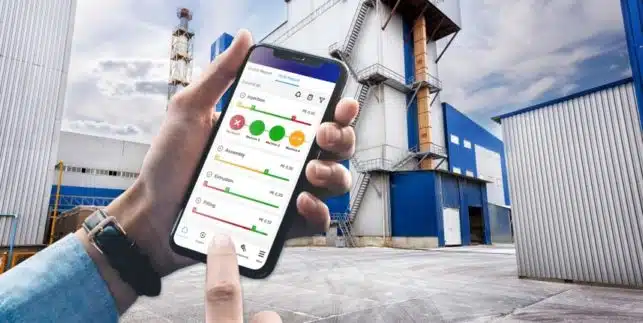Using MES to Help With Energy Management Decision Making

The average American manufacturing facility uses 95.1 kWh of energy per square foot each year, and facilities in other countries aren’t far behind. The shop floor is, clearly, a major consumer of energy. This expenditure represents millions of dollars of investment for each plant and is often one of the largest costs that must be accounted for during its operations.
Thankfully, this cost can be brought down with good energy management practices inside a facility. The only trouble is acquiring enough timely, accurate, and relevant data from the production floor and dynamically integrating the Manufacturing Execution System (MES) with energy management processes to adapt these practices to the needs of the business. Today manufacturers can easily use a cloud-based MES to reduce energy costs quickly and cost-effectively, even with little or no in-house IT expertise.
Current Practices in Manufacturing Energy Management
The idea of monitoring energy use isn’t new: There are already many existing solutions that plants use to keep track of their energy and water usage over time. This is useful both for forecasting and budgeting purposes and to help predict potential equipment failure following unexpected power use fluctuations.
It is also very common for manufacturers to use process controls to manage the use of energy in their facilities. Many plants have systems that incorporate a rudimentary level of dynamic response; for instance, the lights may be programmed to turn themselves off once the last occupant of a room leaves. However, these systems are rarely set up to handle anything much more complex than that, and the efficiency gains that can be achieved with such minor interventions are minimal at best.
Where Existing Systems Fail
Advanced control systems and in-depth energy use monitoring capabilities are massive boons for any manufacturing facility, but neither one offers the level of insight that facilities need to make big changes that have a significant impact on their bottom line. So why not integrate them in real-time to give factory management the advantage of a really holistic view of their manufacturing operations?
Many manufacturing facilities are in places that price energy use according to the time of day to manage demand during peak periods. Since it is obviously undesirable to pay peak rates instead of the lower off-peak ones, ramping down production a few minutes before the rate change occurs might seem like an obvious way to save.
However, energy management decisions are rarely that simple. It is difficult for a manager to know whether or not it is prudent to make this call, especially in the constantly changing conditions of the average factory floor. How can you accurately account for things like a last-minute rush order or sudden staffing changes?
Choosing to scale down production in these circumstances might save a few thousand dollars in energy costs, but it could actually cost you far more than that in lost revenue or reputational damage if you can’t meet your obligations as a business as a result. That decision would only be a good one if the manager is certain that it would not negatively impact production, and the scope of the real-time variables that must be included in that solution is often too wide for that to be a realistic outcome.
Using a Cloud-Based MES
MES software can help give your workers a more holistic picture of your facility’s real-time production performance than human observation alone. Cloud MES solutions draw data from all of your equipment and production lines and can receive input from your workers as well, making them extensive hubs of individualized information for each facility.
That information serves as the foundation for MES analytics, which can synthesize the data into useful insights. Managers can use them to understand what is happening on the factory floor on a minute-to-minute basis, as well as to provide context for decision-making through past performance trends. If the above decision were a sensible one based on current conditions, this data would make that clear; if it were not, that would also become apparent.
Even better, this level of granularity in the data allows for advanced energy management strategies, such as dynamic production scheduling based on the energy requirements of each production run. Off-peak rate hours can be reserved for items that require a lot of energy to create, allowing the facility to produce these resource-intensive products for less. In many cases, energy can even be integrated into the system as a type of material that can be accounted for during production and optimized like any other resource.

Changing the way people work in factories
Request a DemoMES and Energy Management Success
Manufacturing processes will always require companies to input energy to achieve results, but that doesn’t mean that energy should be considered a fixed cost. With the right digital MES software support, you can easily optimize your plant’s energy use in real-time while still accounting for all the many variables of production.
Matics RtOI is a new generation MES solution that can help you to achieve these goals in as little as a few weeks and with no internal IT support needed. Contact us today to learn how easy it can be to start optimizing your facility’s energy use and associated costs – thousands of dollars of savings are on the line.




